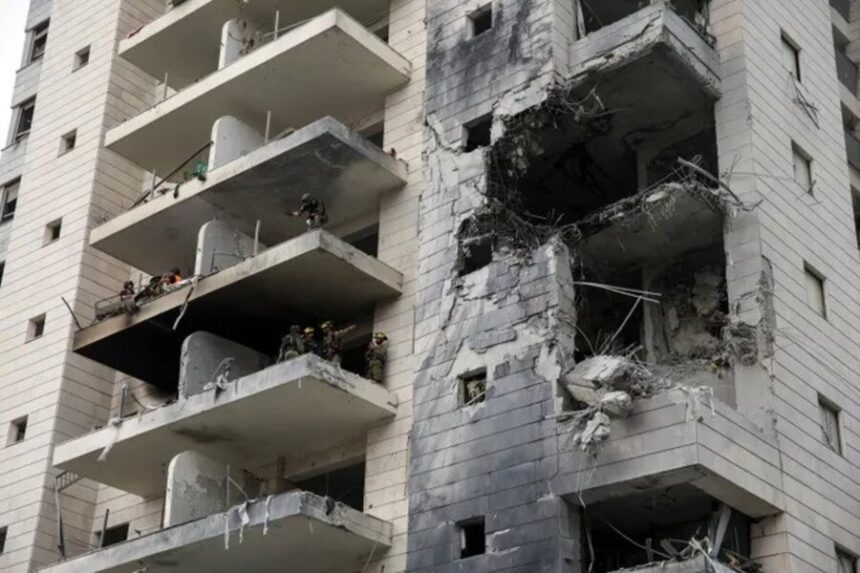In an age where open-source intelligence and digital sleuthing often rival classified channels, an unusual surge in pizza orders near the Pentagon has gone viral for its possible connection to a major military operation. On the evening of June 12, mere hours before Israel launched a covert airstrike against Iran’s nuclear and military infrastructure, a social media account known as Pentagon Pizza Report captured what many believe to be early signs of military mobilization — not through satellite imagery or leaked documents, but via a flurry of pizza deliveries.
At 6:59 p.m. Eastern Time, the account posted on X (formerly Twitter) that several pizza establishments around the Pentagon — including We The Pizza, Domino’s Pizza, District Pizza Palace, and Extreme Pizza — had experienced a “HUGE surge in activity.” Ten minutes later, the same account noted a sharp drop-off in orders. While at first glance this might seem like an amusing food trend, seasoned followers of global conflict and military behavior saw something else: a possible indicator that urgent, classified meetings were underway inside the Pentagon.
That same night, the account posted that Freddie’s Beach Bar, a popular LGBTQ+ venue near the Pentagon, had “abnormally low traffic for a Thursday night,” a detail interpreted by some as a reflection of higher-than-normal activity in the area’s federal facilities.
To those unfamiliar with historical precedents, the connection between pizza orders and global conflict may seem far-fetched. Yet, this isn’t the first time food delivery patterns have coincided with military readiness. According to The Guardian, spikes in local pizza orders occurred prior to the U.S. invasion of Panama in 1989 and again before Operation Desert Storm in 1991. On both occasions, the uptick in food deliveries was later linked to late-night strategy sessions and increased presence of senior officials.
This time, the event that followed was no less significant. On June 12, Israel launched a top-secret military campaign targeting sites tied to Iran’s nuclear ambitions. Though Israel has neither confirmed nor denied its role in the strikes, multiple news outlets, intelligence analysts, and regional sources have reported the operation as a major escalation in the long-standing shadow war between Israel and Iran.
For years, Israeli officials have maintained that they will act unilaterally to prevent Iran from developing nuclear weapons. From sabotage operations inside Iran to cyberattacks like the infamous Stuxnet virus, Israel has made clear it will not allow Tehran to reach weapons-grade enrichment capabilities. The June 12 strike is widely believed to be a continuation of that policy — a dramatic move meant to disrupt Iran’s nuclear trajectory at a critical juncture.
Adding further intrigue, former U.S. President Donald Trump told Reuters that he had prior knowledge of the strike. “We knew everything, and I tried to save Iran humiliation and death,” Trump stated. “I tried to save them very hard because I would have loved to have seen a deal worked out.” His remarks suggest that the United States may have been at least partially briefed on Israel’s intentions, although current U.S. officials have remained silent on the matter.
Whether Trump’s statement indicates active U.S. coordination or simply passive awareness remains a key question. Under U.S. law and international norms, the U.S. typically distances itself from foreign strikes of this magnitude unless national security is directly involved. Still, the possibility of intelligence sharing — even if indirect — cannot be ruled out.
What makes this incident remarkable is how something so seemingly inconsequential — a surge in pizza orders — might serve as a visible ripple of something far more consequential: war planning, strategic briefings, or emergency consultations at one of the most secure and monitored facilities in the world. In a digital era where signals can emerge from anywhere, even food delivery apps have become a point of interest for those seeking early indicators of international conflict.
The concept is not entirely new. Open-source intelligence (OSINT) experts have long used tools like commercial flight trackers, satellite imagery, maritime shipping data, and social media chatter to monitor military movements and geopolitical shifts. What the Pentagon Pizza Report has demonstrated is that even civilian data streams — like food delivery patterns — can provide timely, if indirect, glimpses into government activity.
As of now, Iran has not publicly disclosed the full extent of the damage caused by the strikes, though reports suggest several facilities sustained significant impact. Iranian officials have vowed retaliation in the past following similar incidents, and regional analysts warn that the risk of escalation remains high. Whether Iran chooses a direct response or employs its network of regional proxies — including Hezbollah or militias in Iraq and Syria — remains to be seen.
For Israel, the operation signals both capability and resolve. The country’s intelligence services have consistently demonstrated their reach inside Iranian territory, and this latest strike reaffirms their commitment to preemptively addressing what they view as existential threats. The move may also have domestic political implications, potentially bolstering Israeli leadership amid ongoing internal divisions and coalition tensions.
For the United States, the situation presents diplomatic complexity. While maintaining strategic alignment with Israel, the Biden administration has sought to de-escalate tensions in the Middle East and avoid entanglement in a direct conflict with Iran. If U.S. foreknowledge of the strike is proven, it could complicate negotiations with European allies or disrupt ongoing nuclear diplomacy with Tehran.
In the broader context, this story illustrates the growing role of unconventional data sources in understanding global affairs. While military operations remain shrouded in secrecy, the digital age ensures that not all signals remain hidden. From TikTok videos showing troop deployments to pizza order analytics near key installations, the tools of the new information landscape are evolving — and so too is the public’s ability to read between the lines.
As the dust settles from the June 12 operation and the world awaits Tehran’s response, one thing is clear: in today’s world, clues to tomorrow’s headlines might be hiding in your food delivery app. What was once the domain of defense analysts and intelligence agencies is increasingly becoming crowdsourced, viral, and, yes, delivered with extra cheese.
The Pentagon Pizza Report may not have broken the story of the Israeli strike, but it tapped into something just as powerful: the idea that no movement happens in isolation anymore. Whether it’s missiles in the sky or pepperoni on the way, the signals are out there — and sometimes, they’re hiding in plain sight.




